Sasquatch Hair Analysis in Alberta
Posted by: Loren Coleman on July 19th, 2008
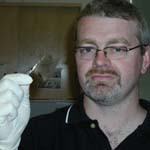
I look forward to seeing as many of you as I can at my 2:00 PM Mountain Time cryptozoology presentation tomorrow, Sunday, July 20th at the Royal Alberta Museum in Edmonton.
Since I’m in Alberta, I thought I would re-visit this story from 2005. Perhaps I will even be able to meet David Coltman (above) and obtain some of the Teslin “Sasquatch” hair for the cryptozoology museum.
Because Coltman’s subsequent analysis turned into a negative result, I feel the episode did not get enough widespread notice in hominology and cryptozoology circles. The event was actually something of a milestone, to have a scientist take to heart the full analysis of hair said to be from a “Sasquatch,” and then get his results published.
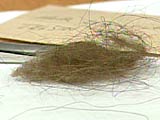
It is always good to see scientific papers being written on the search for authenticity versus fakery occurring in the collection of Bigfoot evidence.
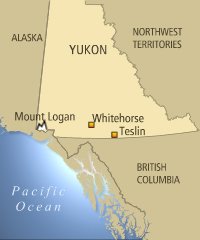
In July 2005, the discovery of a strand of Sasquatch hair near Teslin, Yukon, followed a series of sightings that got a lot of press attention. The anticipation of the DNA tests on the hair became high drama in the media. David Coltman, a geneticist at the University of Alberta, finally determined that the sample was from the hair of a bison, not a higher primate, such as a Bigfoot.
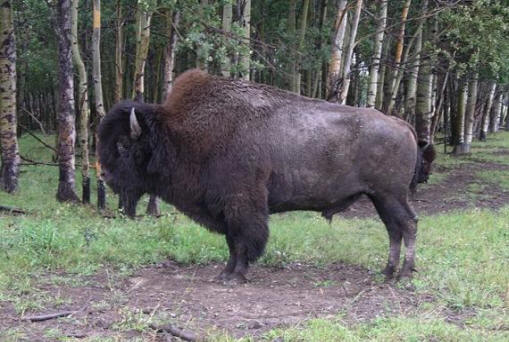
Considering this was found to be bison hair from the Yukon, one might have thought it could be wood bison hair. Coltman’s analysis appears to have compared the hair to plains bison hair only. I’ll have to look into that angle.
Coltman said the hair not only came from a bison but was from a long-dead animal. He said the DNA was highly degraded and of very low quality, indicating that it had either been exposed for a long time to moisture and sunlight, or came from a hide that had been tanned.

Privately, in a 2005 interview, Coltman told me further that it appeared to be bison hair from a treated rug, and thus he felt almost certain what was happening was an attempt at hoaxing.
I have a less sinister suggestion for how this happened. The sample was found on a doorway looking out onto the yard where the Sasquatch was sighted. Perhaps this is an innocent mistake? Perhaps the sighting and the hair sample were linked, when they should have not? Maybe the hair got attached to the door frame due to the shaking out of an old buffalo rug? Maybe it was a coincidence finding that hair there, which got blown up into a “Sasquatch hair sample.”
Coltman did publish a scientific article on the analytic episode, “Molecular cryptozoology meets the Sasquatch,” by David Coltman and Corey Davis, Trends in Ecology and Evolution 21 (2006).
You may download it from the University of Alberta, via clicking here, as a pdf.

While Coltman does not discuss the rug theory in his formal paper, it is good to see the methodology for the bison finding detailed.
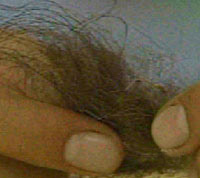
From a cryptozoologically point-of-view, if you are an investigator, always be aware of the environment in which you are, be on the lookout for common sources of hoaxing as you interview eyewitnesses, especially if they give you hair samples. Try to take notice if that’s a bison rug in the front room, under that chair in which you are sitting. 🙂
Some of the more interesting hoaxed “Bigfoot hair samples” have originated from horse owners, taxidermy specimens, taxidermists, and the eyewitnesses’ camel hair brushes. Do accept samples, while remembering, that the “evidence” is only as good as the credibility of the source.
About Loren Coleman
Loren Coleman is one of the world’s leading cryptozoologists, some say “the” leading living cryptozoologist. Certainly, he is acknowledged as the current living American researcher and writer who has most popularized cryptozoology in the late 20th and early 21st centuries.
Starting his fieldwork and investigations in 1960, after traveling and trekking extensively in pursuit of cryptozoological mysteries, Coleman began writing to share his experiences in 1969. An honorary member of Ivan T. Sanderson’s Society for the Investigation of the Unexplained in the 1970s, Coleman has been bestowed with similar honorary memberships of the North Idaho College Cryptozoology Club in 1983, and in subsequent years, that of the British Columbia Scientific Cryptozoology Club, CryptoSafari International, and other international organizations. He was also a Life Member and Benefactor of the International Society of Cryptozoology (now-defunct).
Loren Coleman’s daily blog, as a member of the Cryptomundo Team, served as an ongoing avenue of communication for the ever-growing body of cryptozoo news from 2005 through 2013. He returned as an infrequent contributor beginning Halloween week of 2015.
Coleman is the founder in 2003, and current director of the International Cryptozoology Museum in Portland, Maine.










Perhaps I am the victim of dramatized TV shows on the subject, but haven’t there been a few samples of hair come back as “unknown primate” over the years?
Yes, various samples have come back with a variety of results. Specifically, this posting looked at merely one specific case, tied to the University of Alberta analysis.
Needless to say, it would be most productive to see the results of all DNA analyses of “unknown hominoid” hair samples published, no matter whether the results have been “unknown primate,” inconclusive or known species.
Coltman’s published paper is part of the building of such a database.
Maybe BF was using a old buffalo rug as a overcoat, it gets mighty cold in the Yukon.
Can there be much info on hair samples?
Not a lot of DNA info, I’ve heard, only so much information can be learned from hair samples. Would I be wasting my time trying to retrieve any hair samples?
I know that blood and skin would show a lot of DNA, but hair?
okay, so someone knew what the hairs are from. What purpose did any of this have from their point? I don’t see any reason to purposefully try to pull a fast one on someone like that. The results of the test is not the kind of fame I would like to have…
“And on the Tonight Show tonight folks we have the person that handed fake big foot hair in to be tested as such…”
If Sasquatch is omnivorous then we would expect Alberta Sasquatch to eat the easy meat of bison. So we should not be surprised if bison hair is frequently associated with sightings of Sasquatch in Alberta.
You need science but you also need out-of-the-box logic so that the scientific results don’t become more conclusive than they have to. Right?
I think that even scientific investigation which yields a negative result, as in this case, still contributes to the goal of confirming or disproving the existence of unreocgnized North American primates, and/or hominids. Perhaps it serves to separate the wheat from the chaff, so to speak, so that further resources are not spent following up a bogus lead. I’m glad to see some scientific inquiry going on here, especially since so many contemporary critics seem to prefer ridiculing the subject to actually investigating it.
Pranksters faking old bison rugs for Bigfoot hairs? This really is a hairy situation. But I’m with Amdusias – what did happen to those unverified primate hairs?…
im just trying to imagine a fight between a BF and a bison. BF by headlock?
gkingdano LOL
Of course not, StinkFoot; Sasquatch would send the bison into infinity with his trans-zonal plasmoid ejector – unless, of course, he had his instantanious dark-matter electro-field warper handy
Loren, you said, “Needless to say, it would be most productive to see the results of all DNA analyses of ‘unknown hominoid’ hair samples published, no matter whether the results have been ‘unknown primate,’ inconclusive or known species.” Where would be a good start to collecting these findings and cataloging them? The internet or other? Are any of them in the archives here at Cryptomundo? Thanks, let me know.